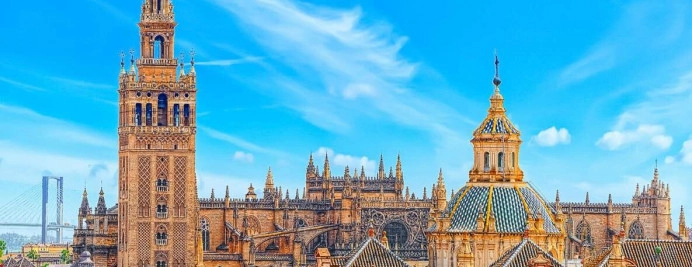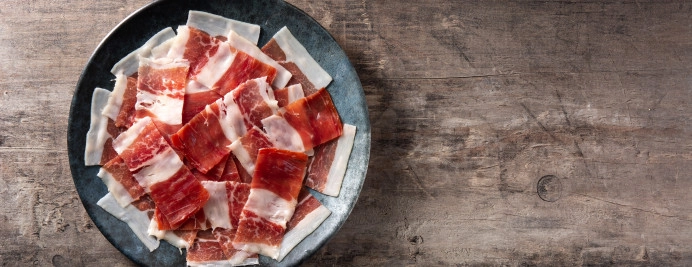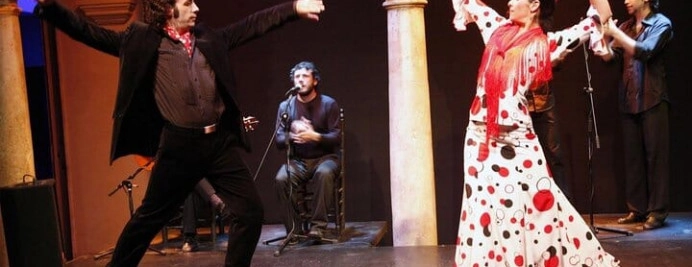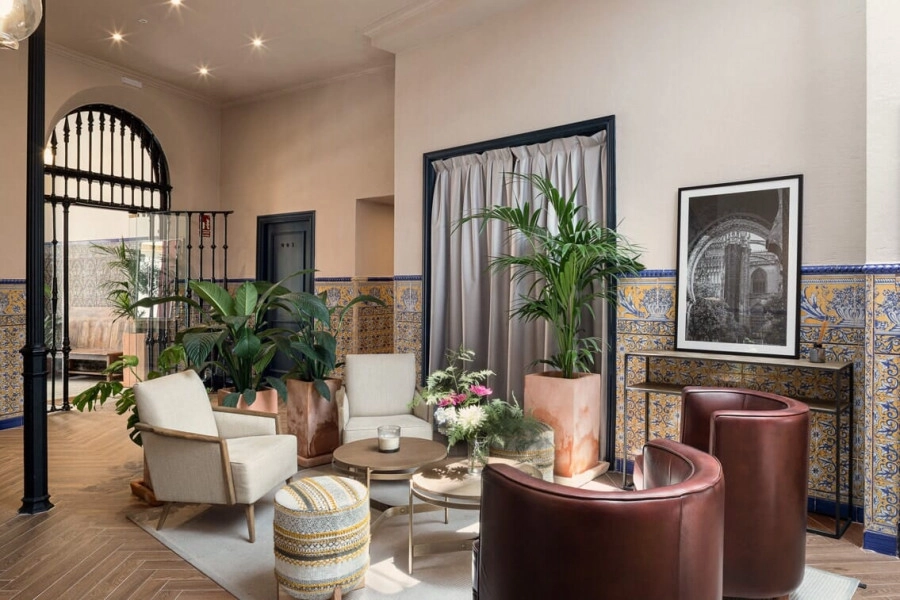Seville
Seville is a cosmopolitan city with significant cultural, commercial, financial, and tourist importance. Seville is one of the most visited European cities, attracting both tourists eager to explore the capital and attendees of conferences, meetings, and various exhibitions held in the city.
Historical Heritage
Wealth and Diversity: Seville boasts a wide variety of historical monuments, spanning from Roman times to the present day. Some examples include:
• The Seville Cathedral, the largest Gothic cathedral in the world.
• The Alcazar of Seville, a royal palace built by the Almohads in the 12th century.
• The Plaza de España, an architectural complex built for the Ibero-American Exposition of 1929.
Cultural Significance: Many of Seville's historical monuments are UNESCO World Heritage Sites. These monuments hold great cultural importance and represent a significant legacy for humanity. For example, the Seville Cathedral was declared a World Heritage Site in 1984, and the Alcazar of Seville in 1987.
Touristic Attraction: Seville's historical heritage is one of the city's main tourist attractions. Every year, millions of visitors come to Seville to admire its historical monuments. For instance, the Seville Cathedral is one of the most visited monuments in Spain, with over 2 million visitors annually.
• The Seville Cathedral, the largest Gothic cathedral in the world.
• The Alcazar of Seville, a royal palace built by the Almohads in the 12th century.
• The Plaza de España, an architectural complex built for the Ibero-American Exposition of 1929.
Cultural Significance: Many of Seville's historical monuments are UNESCO World Heritage Sites. These monuments hold great cultural importance and represent a significant legacy for humanity. For example, the Seville Cathedral was declared a World Heritage Site in 1984, and the Alcazar of Seville in 1987.
Touristic Attraction: Seville's historical heritage is one of the city's main tourist attractions. Every year, millions of visitors come to Seville to admire its historical monuments. For instance, the Seville Cathedral is one of the most visited monuments in Spain, with over 2 million visitors annually.
Gastronomy
Diversity and Quality: Seville's gastronomy is a blend of Mediterranean, Arabic, and African influences. The city offers a wide variety of typical Andalusian dishes, each with its own flavor and aroma. Some examples include:
• Jamón ibérico, a cured ham from Iberian pigs.
• Gazpacho, a cold soup made from tomatoes, cucumber, onion, and garlic.
• Tapas, small portions of food served in bars and restaurants.
Traditional Recipes: Many of Seville's typical dishes are crafted with fresh, seasonal ingredients. These traditional recipes have been passed down from generation to generation, maintaining their flavor and authenticity. For example, jamón ibérico is made from Iberian pigs that feed on acorns, giving it a unique flavor.
Gastronomic Culture: Seville's gastronomy is more than just a meal; it is an essential part of Andalusian culture. Tapeo," for instance, is a highly popular social activity in Seville. People gather in bars to enjoy tapas and engage in conversation."
• Jamón ibérico, a cured ham from Iberian pigs.
• Gazpacho, a cold soup made from tomatoes, cucumber, onion, and garlic.
• Tapas, small portions of food served in bars and restaurants.
Traditional Recipes: Many of Seville's typical dishes are crafted with fresh, seasonal ingredients. These traditional recipes have been passed down from generation to generation, maintaining their flavor and authenticity. For example, jamón ibérico is made from Iberian pigs that feed on acorns, giving it a unique flavor.
Gastronomic Culture: Seville's gastronomy is more than just a meal; it is an essential part of Andalusian culture. Tapeo," for instance, is a highly popular social activity in Seville. People gather in bars to enjoy tapas and engage in conversation."
Culture
Variety and Dynamism: Sevilla is a vibrant city with a rich culture. The city hosts numerous festivals and cultural events each year. Some examples include:
• La Feria de Abril, a traditional fair held in May.
• Semana Santa, a religious celebration taking place in April.
• The Sevilla European Film Festival, a film festival held in November.
Tradition and Modernity: Sevilla is a city with a strong cultural identity. The city preserves its traditions but is also open to new trends. This blend of tradition and modernity makes Sevilla a unique and appealing city. For instance, the Feria de Abril is a centuries-old tradition celebrated with great enthusiasm, but new elements like electronic music have also been introduced.
International Influence: Sevilla's culture has international influence. Flamenco, for example, is an art form that has been exported worldwide. The city is a significant cultural center in Southern Europe. Flamenco is a traditional Andalusian dance characterized by passionate movements and expressive music. It has become a popular art form worldwide and is one of the main tourist attractions in Sevilla.
• La Feria de Abril, a traditional fair held in May.
• Semana Santa, a religious celebration taking place in April.
• The Sevilla European Film Festival, a film festival held in November.
Tradition and Modernity: Sevilla is a city with a strong cultural identity. The city preserves its traditions but is also open to new trends. This blend of tradition and modernity makes Sevilla a unique and appealing city. For instance, the Feria de Abril is a centuries-old tradition celebrated with great enthusiasm, but new elements like electronic music have also been introduced.
International Influence: Sevilla's culture has international influence. Flamenco, for example, is an art form that has been exported worldwide. The city is a significant cultural center in Southern Europe. Flamenco is a traditional Andalusian dance characterized by passionate movements and expressive music. It has become a popular art form worldwide and is one of the main tourist attractions in Sevilla.
Location & Contact
Address
C. San Pedro Mártir, 1, 41001, Sevilla, España






